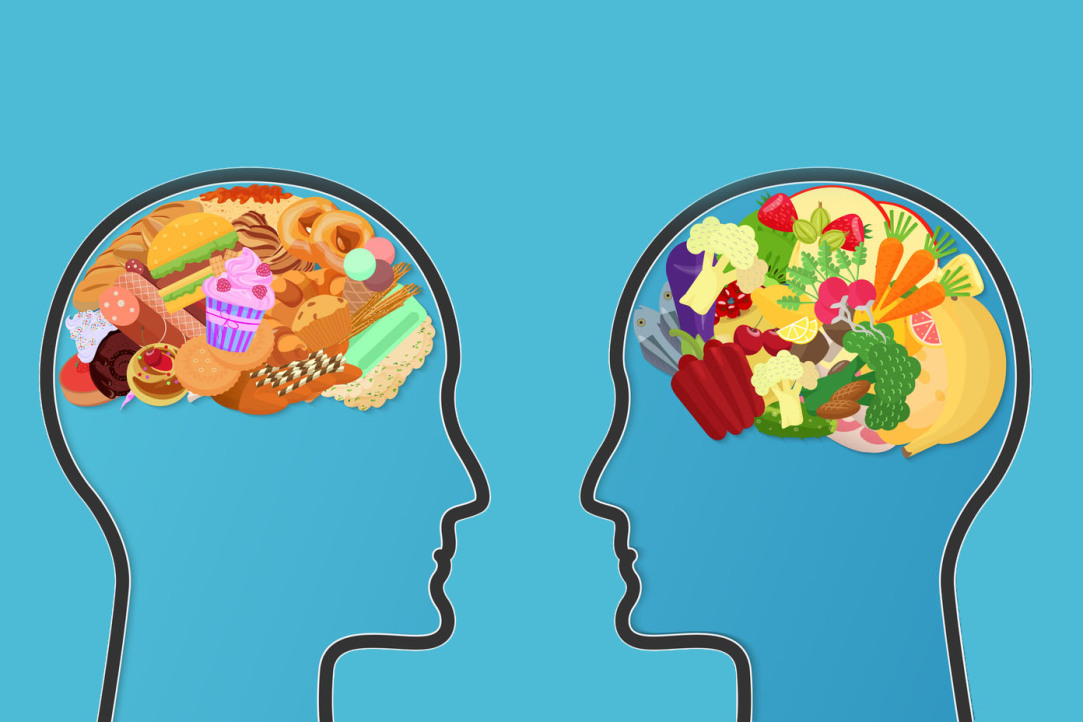Neuroscientists Reveal Anna Karenina Principle in Brain's Response to Persuasion

A team of researchers at HSE University investigated the neural mechanisms involved in how the brain processes persuasive messages. Using functional MRI, the researchers recorded how the participants' brains reacted to expert arguments about the harmful health effects of sugar consumption. The findings revealed that all unpersuaded individuals' brains responded to the messages in a similar manner, whereas each persuaded individual produced a unique neural response. This suggests that successful persuasive messages influence opinions in a highly individual manner, appearing to find a unique key to each person's brain. The study findings have been published in PNAS.
Persuading people to adopt a healthier lifestyle can be accomplished through effective argumentation. For several years, researchers at the HSE Institute for Cognitive Neuroscience have been investigating how expert arguments about healthy eating can influence a person's willingness to purchase sugar-free foods, and, most importantly, which areas of the brain are involved.
In a recent study, neuroscientists at HSE University compare the brain responses of individuals who are likely to be persuaded by expert arguments with those who resist persuasion. Unlike traditional research approaches, where participants are exposed to isolated words or phrases, the researchers presented the subjects with an expert's talk on the health risks of sugar consumption. This approach supports a more realistic laboratory simulation of persuasive communication. To obtain a comprehensive and detailed picture of neural activity in different groups of participants, the researchers employed functional magnetic resonance imaging (fMRI). Using the mathematical method of intersubject correlation analysis, the researchers then examined whether the neural responses to the healthy eating call were similar or varied across participants.

The experiment involved 50 participants and consisted of two parts. First, participants were asked to rate three types of products—sugar-containing, sugar-free, and non-edible—and to place bids on each by indicating how much they would be willing to pay. Next, the participants listened to a 7-minute lecture by an expert on the health risks of sugar consumption, after which they were asked to bid on the same products once again. Throughout the experiment, the researchers monitored the participants' brain activity using fMRI.
As a result of the healthy eating message, some participants changed their minds in favour of a healthier diet. The persuaded group also displayed highly varied patterns of brain activity, in particular a greater diversity of activity in the lower regions of the frontal cortex, an area crucial for decision-making and social cognition.
In contrast, the brains of participants who were sceptical and unpersuaded by the expert's arguments processed the information all in a similar manner. They showed high synchronisation of activity in brain regions linked to self-reflection and critical assessment of information.
'We used an unconventional method to study brain activity: we examined the similarity of neural activity across a group of individuals. In scientific terms, this is referred to as "intersubject correlation of brain activity." Our findings can be described as a type of Anna Karenina effect, where the responses of those who are indifferent and immune to arguments are alike, while each persuaded individual responds in their own unique way. Apparently, an effective persuasive message can adapt to individuals' unique characteristics, targeting aspects that are particularly relevant to each listener,' explains Vasily Klyucharev, Head of the International Laboratory of Social Neurobiology and of this research project.
Interestingly, participants influenced by the expert's talk were willing to pay more for healthy food, but the value they placed on sugar-containing food did not decrease. According to the researchers, this may be due to the structure of the audio message: towards the end, the expert emphasised the benefits of healthy eating rather than the negative effects of sugar consumption. Information that concludes a message is typically remembered best.

Ioannis Ntoumanis
'In the future, we hope to continue studying this "Anna Karenina effect" to identify the reasons behind the differences in neuronal activity among those who are persuaded. Does the effectiveness of persuasive messages depend on the chosen arguments, and what factors exactly influence people? All of this can improve the perception of public health messages, making them more personalised and, as a result, more effective,' according to Ioannis Ntoumanis, Junior Research Fellow at the International Laboratory of Social Neurobiology and co-author of the study.
The study was conducted within the framework of the strategic project 'Human Brain Resilience: Neurocognitive Technologies for Adaptation, Learning, Development and Rehabilitation in a Changing Environment' ('Priority 2030').
See also:
Education System Reforms Led to Better University Performance, HSE Researchers Find
A study by researchers at the HSE Faculty of Economic Sciences and the Institute of Education have found that the number of academic papers published by research universities in international journals has tripled in the past eight years. Additionally, universities have developed more distinct specialisations. Thus, sectoral universities specialising in medical, pedagogical, technical, and other fields are twice as likely to admit students to target places. The study has been published in Vocation, Technology & Education.
Scientists Record GRB 221009A, the Brightest Gamma-Ray Burst in Cosmic History
A team of scientists from 17 countries, including physicists from HSE University, analysed early photometric and spectroscopic data of GRB 221009A, the brightest gamma-ray burst ever recorded. The data was obtained at the Sayan Observatory one hour and 15 minutes after the emission was registered. The researchers detected photons with an energy of 18 teraelectronvolts (TeV). Theoretically, such high-energy particles should not reach Earth, but data analysis has confirmed that they can. The results challenge the theory of gamma radiation absorption and may point to unknown physical processes. The study has been published in Astronomy & Astrophysics.
Chemists Simplify Synthesis of Drugs Involving Amide Groups
Chemists from HSE University and the Nesmeyanov Institute of Organoelement Compounds of the Russian Academy of Sciences (INEOS RAS) have developed a new method for synthesising amides, essential compounds in drug production. Using a ruthenium catalyst and carbon monoxide under precisely controlled reaction conditions, they successfully obtained the target product without by-products or complex purification steps. The method has already been tested for synthesising a key component of Vorinostat, a drug used to treat T-cell lymphoma. This approach could lower the cost of the drug by orders of magnitude. The paper has been published in the Journal of Catalysis. The study was supported by the Russian Science Foundation.
Scientists Examine Neurobiology of Pragmatic Reasoning
An international team including scientists from HSE University has investigated the brain's ability to comprehend hidden meanings in spoken messages. Using fMRI, the researchers found that unambiguous meanings activate brain regions involved in decision-making, whereas processing complex and ambiguous utterances engages regions responsible for analysing context and the speaker's intentions. The more complex the task, the greater the interaction between these regions, enabling the brain to decipher the meaning. The study has been published in NeuroImage.
Scientists Present New Solution to Imbalanced Learning Problem
Specialists at the HSE Faculty of Computer Science and Sber AI Lab have developed a geometric oversampling technique known as Simplicial SMOTE. Tests on various datasets have shown that it significantly improves classification performance. This technique is particularly valuable in scenarios where rare cases are crucial, such as fraud detection or the diagnosis of rare diseases. The study's results are available on ArXiv.org, an open-access archive, and will be presented at the International Conference on Knowledge Discovery and Data Mining (KDD) in summer 2025 in Toronto, Canada.
Hi-Tech Grief: HSE Researchers Explore the Pros and Cons of Digital Commemoration
Researchers at HSE University in Nizhny Novgorod have explored how technological advancements are transforming the ways in which people preserve the memory of the deceased and significant events. Digital technologies enable the creation of virtual memorials, the preservation of personal stories and belongings of the deceased, interaction with their digital footprint, and even the development of interactive avatars based on their online activity. However, these technologies not only evoke nostalgia and provide a sense of relief but can also heighten anxiety and fear, and delay the process of accepting loss. The study has been published in Chelovek (The Human Being).
Scientists Find Out Why Aphasia Patients Lose the Ability to Talk about the Past and Future
An international team of researchers, including scientists from the HSE Centre for Language and Brain, has identified the causes of impairments in expressing grammatical tense in people with aphasia. They discovered that individuals with speech disorders struggle with both forming the concept of time and selecting the correct verb tense. However, which of these processes proves more challenging depends on the speaker's language. The findings have been published in the journal Aphasiology.
Implementation of Principles of Sustainable Development Attracts More Investments
Economists from HSE and RUDN University have analysed issues related to corporate digital transformation processes. The introduction of digital solutions into corporate operations reduces the number of patents in the field of green technologies by 4% and creates additional financial difficulties. However, if a company focuses on sustainable development and increases its rating in environmental, social, and governance performance (ESG), the negative effects decrease. Moreover, when the ESG rating is high, digitalisation can even increase the number of patents by 2%. The article was published in Sustainability.
Russian Scientists Develop New Compound for Treating Aggressive Tumours
A team of Russian researchers has synthesised a novel compound for boron neutron capture therapy (BNCT), a treatment for advanced cancer that uses the boron-10 isotope. The compound exhibits low toxicity, excellent water solubility, and eliminates the need for administering large volumes. Most importantly, the active substance reaches the tumour with minimal impact on healthy tissues. The study was published in the International Journal of Molecular Sciences shortly before World Cancer Day, observed annually on February 4.
Scientists Discover Link Between Brain's Structural Features and Autistic Traits in Children
Scientists have discovered significant structural differences in the brain's pathways, tracts, and thalamus between children with autism and their neurotypical peers, despite finding no functional differences. The most significant alterations were found in the pathways connecting the thalamus—the brain's sensory information processing centre—to the temporal lobe. Moreover, the severity of these alterations positively correlated with the intensity of the child's autistic traits. The study findings have been published in Behavioural Brain Research.



